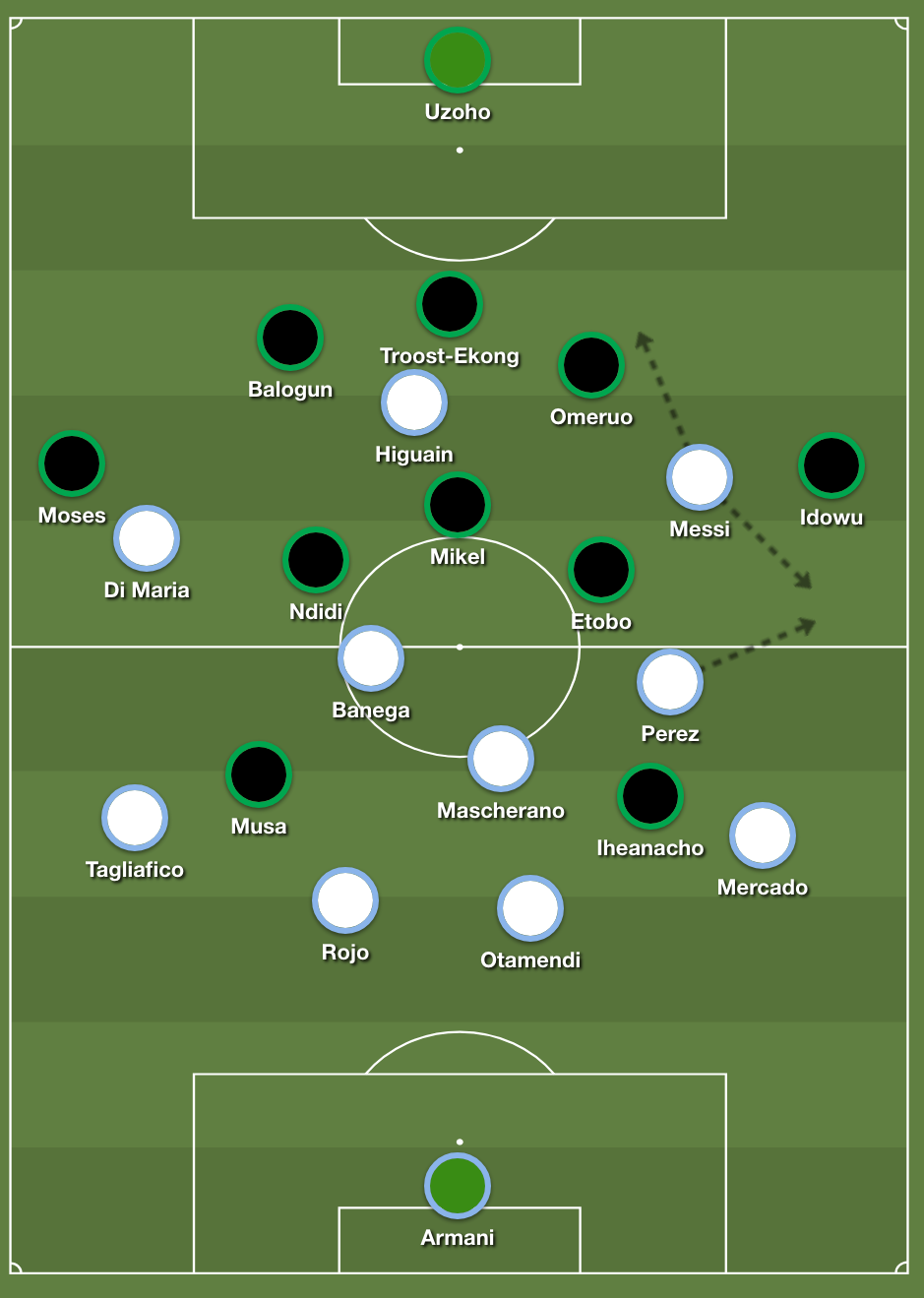Nigeria vs Argentina: Ever Banega’s return frees Lionel Messi from creative duties to inspire victory
This, at last, provided Argentina with a playmaker who could pull the strings and took some of the creative burden away from Messi, who could concentrate on providing brilliance

Your support helps us to tell the story
From reproductive rights to climate change to Big Tech, The Independent is on the ground when the story is developing. Whether it's investigating the financials of Elon Musk's pro-Trump PAC or producing our latest documentary, 'The A Word', which shines a light on the American women fighting for reproductive rights, we know how important it is to parse out the facts from the messaging.
At such a critical moment in US history, we need reporters on the ground. Your donation allows us to keep sending journalists to speak to both sides of the story.
The Independent is trusted by Americans across the entire political spectrum. And unlike many other quality news outlets, we choose not to lock Americans out of our reporting and analysis with paywalls. We believe quality journalism should be available to everyone, paid for by those who can afford it.
Your support makes all the difference.Argentina required a late goal from a hugely unlikely source – the right boot of Marcos Rojo – but their approach throughout their 2-1 victory over Nigeria was at least an improvement upon past displays. How much credit manager Jorge Sampaoli can take remains questionable, however, after various reports Lionel Messi and Javier Mascherano are effectively now running the dressing room.
Amongst various changes, the key for Argentina was the introduction of Ever Banega, the prodigiously talented creative midfielder. This, at last, provided Argentina with a playmaker who could pull the strings and took some of the creative burden away from Messi, who could concentrate on providing brilliance in more advanced positions.
Messi’s role in the side was essentially as an inside-right, not entirely different from the position he played against Croatia, but in a 4-3-3, or 4-2-3-1, rather than 3-4-3. Sometimes Messi lurked on the right touchline, waiting for switches of play, and at other times he ventured infield between the lines. In turn, Enzo Perez would play a balancing role: tucking inside when Messi was wide, providing the width when Messi drifted in. Messi could wander without Argentina losing their shape.
Although sometimes the responsibility of left-wing-back Brian Idowu, Messi was generally watched by Nigeria’s left-sided centre-back Kenneth Omeruo, who stepped forward from defence to shut him down, content that his two centre-back colleagues would watch Gonzalo Higuain. It seemed like Higuain would find space by running into that channel behind Omeruo, exploiting the fact he was dragged towards Messi. Instead, the man who exploited the space created by Messi was Messi himself. Suddenly sprinting in behind Omeruo to receive Banega’s pass, Messi produced three tremendous, quickfire touches with thigh, left foot and then right foot, crashing the ball into the far corner. It wouldn’t have happened without Messi’s genius, but it also wouldn’t have happened without Banega in midfield.
Those two aside, Argentina still looked desperately short of quality. Higuain, deployed upfront to play with his back to goal and tee up Messi, did so only once, and didn’t get enough on a decent first-half chance when released by Messi’s through-ball into the inside-right channel. Di Maria, playing on the left, was underwhelming in possession, although made a fine run into in behind found by Banega’s measured pass, and was cynically fouled by Leon Balogun. Messi hit the post from the resulting free-kick.

Argentina’s worst performer was the man supposedly leading the dressing room alongside Messi.
Throughout his top-level career, Mascherano steadily improved into a world-class holding midfielder and centre-back, because he became a more calm, intelligent player who anticipated danger rather than reacted to it. Here, in what would have been his last international appearance but for Rojo’s late goal, he reverted to his teenage self, the epitome of the Argentine ‘number 5’: tenacity, temper and tackles. On several occasions in the first half, his headless chicken act threatened to cost Argentina dear, and five minutes into the second half he made two mistakes in quick succession, first conceding an unnecessary corner when desperate to head away a ball two teammates would have dealt with, then hauling Balogun to the floor at a corner. It’s incredible that he lasted 90 minutes: it seemed merely a question of whether the referee, Sampaoli or Mascherano himself would decide he’d overstayed his welcome.
Argentina deserve some credit, though, for steadily increasing their attacking threat without completely losing their shape. Cristian Pavon replaced Perez down the right to provide extra attacking speed and immediately made inroads. On the opposite flank, Maximiliano Meza replaced Di Maria and offered something similar. In the final 10 minutes Sergio Aguero was summoned as a second striker, with left-back Nicolas Tagliafico departing. This was all-out attack, yet even now they retained some semblance of shape, as Rojo shifted across and acted as a left-sided defender, with Gabriel Mercado playing to the right of a back three. Those two played more like attacking full-backs, though, and Argentina left the back door open. Substitute Odion Ighalo had a late chance to win it.
But fortune favours the brave, and it was those two wide defenders, Mercado and Rojo, who combined for the winner. Argentina haven’t become a good side overnight, but with Messi allowed to work in his preferred positions, Banega dictating play from deep and attack-minded substitutes providing extra threat, Argentina just about did enough.
Join our commenting forum
Join thought-provoking conversations, follow other Independent readers and see their replies
Comments